ADDICTION
ALCOHOL DEPENDENCE
QUIT SMOKING
ALLERGY
ANTI FUNGAL
FUNGAL INFECTION
FUNGAL NAIL INFECTIONS
ANTI-REJECTION DRUGS
ANTI WORM
ANTIBIOTIC
BACTERIAL INFECTIONS
ARTHRITIS
GOUT
OSTEOARTHRITIS
RHEUMATOID ARTHRITIS
BLOOD
LOW PLATELET COUNT
THROMBOPHLEBITIS
VARICOSE VEINS
COLON
ANAL FISSURE
PILES
ULCERATIVE COLITIS
DIABETES CARE
DIABETES INSIPIDUS
DIABETES TYPE
DIABETIC FOOT ULCERS
GLUCOSE MONITOR
EYES/EAR CARE
DRY EYES
EYE CARE
EYE EXAMINATION
EYE INFECTION
EYE LASHES
EYE PAIN
GLAUCOMA
OCULAR HYPERTENSION
UVEITIS
FEVER CARE
MALARIA
RHEUMATIC FEVER
TYPHOID FEVER
GASTROINTESTINAL
ACIDITY
CONSTIPATION
CROHN'S DISEASE
DIARRHOEA
GALLBLADDER STONES
INTESTINAL ULCERS
IRRITABLE BOWEL SYNDROME
MOTION SICKNESS
NAUSEA
Proscalpin 1 mg (Finasteride)
| Active Ingredient (Generic Name): | Finasteride |
|---|---|
| Indication: | Benign prostatic hyperplasia, Hair loss |
| Manufacturer: | Centurion Laboratories Pvt. Ltd. |
| Packaging: | 10 tablets in one strip |
| Strength: | 1 mg |
From: $36.00
Address hair loss with Proscalpin 1 mg, a clinically proven treatment that stimulates hair growth and slows down hair loss. This medication, containing finasteride, inhibits the 5-alpha-reductase enzyme, preventing the conversion of testosterone to DHT and blocking DHT production for thicker, fuller hair. Consistent use can lead to improvements in hair regrowth, reduced hair fall, and increased hair density. Learn about the benefits, potential side effects, and comparisons with other treatments to make an informed decision about your hair loss treatment.
Main Points
- Proscalpin 1 mg, a form of finasteride, is prescribed for male pattern baldness and female pattern hair loss to reduce hair loss and stimulate regrowth.
- The recommended dose is one tablet daily taken orally at the same time each day for consistency and adherence to prescribed instructions.
- Possible side effects include sexual complications, breast tissue changes, allergic reactions, dizziness, headaches, or drowsiness; potential drug interactions should be noted.
- Proscalpin 1 mg is not recommended with anticoagulants, aspirin, or NSAIDs as it may increase the risk of bleeding and other adverse effects.
- Combining Proscalpin 1 mg with Minoxidil can improve hair growth, strengthen hair follicles, and enhance scalp health for thicker, fuller hair and a healthier scalp.
What Is Proscalpin 1 Mg?
Proscalpin 1 mg is a form of finasteride, a medication designed to address male pattern baldness by slowing hair loss and promoting growth. It comes in tablet form for daily consumption, commonly prescribed for men but also suitable for women with female pattern hair loss. The standard 1 mg dose is effective in treating hair loss when taken as directed. Results include reduced hair loss and increased hair regrowth over time, although patience is necessary as visible effects may take months to manifest. Consistent usage can lead to significant improvement in hair appearance and confidence levels.
How Does Proscalpin 1 Mg Work?
Proscalpin 1 Mg acts by inhibiting the 5-alpha-reductase enzyme, which converts testosterone into dihydrotestosterone (DHT). By blocking DHT production, Proscalpin 1 Mg reduces hair loss, leading to thicker and healthier hair growth. This process helps in decreasing hair fall and stimulating new hair growth.
Inhibits 5-Alpha-Reductase Enzyme
By inhibiting the 5-alpha-reductase enzyme, the conversion of testosterone to dihydrotestosterone (DHT) is prevented. DHT is a potent form of testosterone linked to hair loss and benign prostatic hyperplasia (BPH). This enzyme’s role is to convert testosterone into DHT, a more active form of testosterone. Inhibiting this enzyme reduces DHT production, slowing down hair loss and alleviating BPH symptoms.
The effects of the 5-alpha-reductase enzyme include the conversion of testosterone to DHT, leading to hair loss and BPH. Elevated DHT levels accelerate hair loss and worsen BPH symptoms, while stimulating hair follicle miniaturization contributes to hair loss. Additionally, the enzyme’s action enlarges the prostate gland, contributing to BPH, and disrupts the hair growth cycle, resulting in slower hair growth.
Blocks DHT Production
Proscalpin 1 mg functions by inhibiting the 5-alpha-reductase enzyme, which is responsible for converting testosterone into dihydrotestosterone (DHT). DHT is a potent form of testosterone linked to hair loss and benign prostatic hyperplasia (BPH). By blocking this enzyme, Proscalpin 1 mg reduces the production of DHT in the body. This reduction is crucial as DHT is known to shrink hair follicles, leading to hair loss, and promote prostate growth, causing BPH. Taking Proscalpin 1 mg with finasteride prevents the conversion of testosterone into DHT by binding to the 5-alpha-reductase enzyme. Consequently, the levels of DHT decrease, alleviating its negative effects on hair and prostate health. By impeding DHT production, Proscalpin 1 mg effectively addresses the root causes of hair loss and BPH, offering a reliable treatment option for these conditions.
Slows Hair Loss
Proscalpin 1 mg inhibits the conversion of testosterone to dihydrotestosterone (DHT), a hormone linked to hair loss. By reducing DHT levels, Proscalpin 1 mg helps slow down hair loss by preventing hair follicle shrinkage. DHT binds to androgen receptors in follicles, causing them to shrink and leading to hair loss. Blocking DHT production with Proscalpin 1 mg can help maintain thicker, fuller hair, improving overall appearance. This medication may reduce hair loss and promote healthier hair growth, helping to preserve a fuller head of hair for longer.
Benefits of Using Proscalpin 1 Mg
Regular use of Proscalpin 1 mg can effectively stimulate hair growth and reduce the likelihood of hair loss, making it a valuable treatment for individuals dealing with androgenetic alopecia. By blocking the production of dihydrotestosterone (DHT), a hormone linked to hair loss, Proscalpin 1 mg slows down hair shedding and encourages new hair growth. Improvement in hair density and a decrease in hair fall can typically be observed within a few months of initiating treatment.
Moreover, the use of Proscalpin 1 mg can enhance the overall health and appearance of your hair. You may experience thicker, stronger, and shinier hair, leading to a more confident and youthful look. Proscalpin 1 mg is also effective in addressing male pattern baldness, making it a preferred choice for men combating hair loss. By integrating Proscalpin 1 mg into your hair care routine, you can achieve a fuller, healthier-looking head of hair and restore your self-assurance.
Proscalpin 1 Mg Dosage Instructions
For optimal results and minimal side effects, it is crucial to follow the prescribed dosage guidelines for Proscalpin 1 mg. Begin by taking one tablet orally each day, either with or without food. Consistency is key, so aim to take the medication at the same time daily to establish a routine and avoid missing a dose. Swallow the tablet whole and do not crush, break, or chew it.
Side Effects of Proscalpin 1 Mg
Proscalpin 1 mg may lead to certain side effects while addressing scalp hair loss. Some individuals may experience sexual issues like decreased libido, erectile dysfunction, or ejaculation disorders. These effects are typically temporary and reversible, but persistent symptoms should prompt a consultation with your healthcare provider. Changes in breast tissue, such as tenderness, enlargement, or nipple discharge, could also occur. Allergic reactions like rash, itching, or hives have been reported by some users. Additionally, dizziness, headache, or drowsiness may result from taking Proscalpin 1 mg.
It’s important to note that not everyone will encounter side effects, and the intensity can vary. If any unusual symptoms arise or persist, consulting a healthcare provider is recommended. They can assess the benefits of Proscalpin 1 mg versus potential risks and make necessary adjustments to your treatment plan. Keep in mind that finasteride, the active component in Proscalpin 1 mg, can impact PSA levels, potentially affecting prostate cancer screening outcomes.
Precautions Before Taking Proscalpin
Before starting Proscalpin 1 mg, it’s crucial to inform your healthcare provider about any underlying medical conditions such as liver disease, prostate cancer, or urinary tract issues. This is important as Proscalpin may interact with these conditions, potentially increasing the risk of adverse effects. Be sure to disclose any allergies you have, especially to finasteride or any other ingredients in Proscalpin.
If you are considering starting a family, it’s important to note that Proscalpin can impact semen quality. While it is not recommended for pregnant women to handle crushed or broken Proscalpin tablets due to potential risks, the chances of absorption through skin contact are low. Nevertheless, exercise caution and remember to wash your hands thoroughly after handling the medication.
Keep in mind that Proscalpin is not intended for use in children or women. Additionally, refrain from donating blood while taking Proscalpin or for at least six months after discontinuing treatment, as the medication may be transmitted to a pregnant woman through blood transfusion. By openly discussing your medical history and adhering to these precautions, you can reduce the potential risks associated with Proscalpin and ensure safe treatment.
Interactions With Other Medications
When considering taking Proscalpin 1 Mg, it is essential to understand its interactions with other medications you are currently using. Certain drug combinations can increase the risk of adverse effects or reduce the effectiveness of your treatment. It is important to assess the specific risks associated with combining Proscalpin 1 Mg with other medications to ensure your safety.
Drug Combination Risks
Combining Proscalpin 1 mg with certain medications can heighten the risk of adverse interactions, notably when used alongside drugs that inhibit or induce cytochrome P450 3A4 enzymes. Caution is advised when taking Proscalpin 1 mg with medications metabolized by this enzyme, as it can impact the effectiveness and safety of both substances. For example, concurrent use with potent inhibitors like ketoconazole or itraconazole may elevate the plasma concentration of finasteride, potentially leading to side effects.
Furthermore, it is advisable to steer clear of pairing Proscalpin 1 mg with medications susceptible to CYP3A4 induction, such as oral contraceptives or cyclosporine, as it might diminish their efficacy. Your healthcare provider should thoroughly assess your medication regimen to pinpoint potential interactions and make necessary adjustments to your treatment plan. Disclosing all medications, including over-the-counter drugs and supplements, is crucial to ensure a safe and successful course of treatment with Proscalpin 1 mg. By staying mindful of these possible interactions, you can reduce the risk of adverse reactions and optimize the outcome of your treatment.
Medication Interaction Types
When prescribed Proscalpin 1 mg, it’s essential to understand various medication interactions that can occur with other drugs, such as pharmacokinetic, pharmacodynamic, pharmaceutical, and other interactions. These interactions can impact the effectiveness and safety of your treatment.
Comprehending these interactions can help you mitigate potential risks and ensure the safe co-administration of medications. Here’s a breakdown of each type:
| Interaction Type | Description |
|---|---|
| Pharmacokinetic | Changes in the absorption, distribution, metabolism, or excretion of a medication |
| Pharmacodynamic | Amplification or inhibition of a medication’s therapeutic effects |
| Pharmaceutical | Incompatibility between medications, affecting their physical or chemical properties |
| Other | Interactions involving food, beverages, or supplements that can influence medication effectiveness |
Contraindicated Substances List
Certain medications can have harmful interactions with Proscalpin 1 mg, known as contraindications. It is crucial to consult with your doctor and review your medication list before taking Proscalpin 1 mg to avoid potential complications.
Combining Proscalpin 1 mg with the following substances can lead to increased risk of bleeding and other side effects:
- Anticoagulants (e.g., warfarin)
- Aspirin
- Nonsteroidal anti-inflammatory drugs (NSAIDs)
To ensure the safety and effectiveness of your treatment, disclose all medications, vitamins, and supplements to your doctor. They will assess the risks and benefits of combining Proscalpin 1 mg with other medications.
Proscalpin 1 Mg Vs Other Treatments
Proscalpin 1 mg is frequently compared to similar medications such as finasteride and dutasteride for its effectiveness and side effect profiles. Understanding how Proscalpin 1 mg compares to other treatments is essential when weighing your options.
| Medication | Dosage Frequency |
|---|---|
| Proscalpin 1 mg | Once daily |
| Finasteride | Once daily |
| Dutasteride | Once daily |
| Minoxidil | Twice daily |
| Spironolactone | Twice daily |
Consider factors like dosing frequency, potential side effects, and efficacy in managing conditions like androgenetic alopecia and benign prostatic hyperplasia when evaluating these medications. Proscalpin 1 mg has demonstrated effectiveness in treating hair loss and reducing the risk of prostate issues. It is important to compare its benefits with those of other medications to make an informed treatment decision.
Understanding the similarities and differences between these medications can help you choose the most suitable option for your needs.
Results to Expect From Proscalpin
When using Proscalpin 1 Mg, you can anticipate improvements in hair regrowth and a slowing of hair loss. You may observe a reduction in the rate of hair loss and potential new hair growth, especially on the crown of the head and along the hairline. With continued treatment, these effects are likely to become more prominent over time.
Hair Regrowth Expectations
Regular use of Proscalpin 1mg can lead to increased hair density and a reduction in hair fall within three to six months. Continued use can result in improvements in hair growth and density. Specific outcomes include increased hair thickness, reduced shedding, and improved hair growth in previously thinning or balding areas.
Slowing Hair Loss
You can anticipate a notable decrease in hair loss within the initial three to six months of using Proscalpin 1mg. This medication functions by inhibiting the production of dihydrotestosterone (DHT), a hormone linked to hair loss. With diminishing DHT levels, the rate at which your hair follicles shrink slows down, resulting in reduced hair loss.
Continued use of Proscalpin 1mg will sustain this decline in hair loss. Research indicates that Proscalpin 1mg can lower hair loss by up to 30% over a year. Consequently, you are likely to observe a significant decrease in hair shedding, potentially leading to thicker and fuller-looking hair.
It is important to note that Proscalpin 1mg is a treatment, not a cure. Consistent usage of the medication is necessary to uphold its effects. Through regular consumption, you can expect ongoing mitigation of hair loss and the potential for some hair regrowth over time.
Combining Proscalpin With Minoxidil
Combining Proscalpin with minoxidil can effectively enhance hair growth and strengthen hair follicles. When used together, these two medications can produce more impactful results than when used individually. Benefits of combining Proscalpin with minoxidil include increased hair density, faster hair growth, and improved scalp health. This combination stimulates hair growth, leading to thicker and fuller hair, while also promoting a healthier scalp by reducing inflammation and creating a conducive environment for hair growth.
Where to Buy Proscalpin 1 Mg
When looking to purchase Proscalpin 1 mg, it is crucial to prioritize authenticity and quality to ensure the medication’s effectiveness and safety. Avoid buying from unreliable sources such as unverified online pharmacies or street vendors, as they may offer counterfeit or contaminated products. Instead, opt for reputable online pharmacies that mandate a valid prescription and employ licensed pharmacists.
You can also buy Proscalpin 1 mg from a local pharmacy or a doctor’s office. Check the medication’s packaging for any signs of tampering and confirm the expiration date. Additionally, ensure that you purchase from a licensed pharmacy that adheres to your country’s laws and regulations.
It is advisable to conduct thorough research and read customer reviews before making a purchase. Be cautious of overly low prices or offers that seem too good to be true, as they could indicate a counterfeit product. By taking these precautions, you can be confident in acquiring a genuine and effective product that meets your hair loss treatment requirements.
Frequently Asked Questions
Can I Use Proscalpin 1 Mg for Hair Loss Prevention Only?
If considering Proscalpin 1 mg for hair loss prevention, it’s essential to understand its primary use. While typically used for benign prostatic hyperplasia (BPH), Proscalpin 1 mg has demonstrated effectiveness in slowing hair loss and promoting new hair growth. It can be utilized for hair loss prevention, but consulting a healthcare provider is recommended to discuss potential side effects and optimal usage.
Is Proscalpin 1 Mg Safe for Long-Term Hair Loss Treatment?
When considering long-term hair loss treatment, it’s important to ensure the chosen medication is safe for extended use. FDA-approved hair loss treatments have undergone comprehensive testing for safety and efficacy. Finasteride, such as Proscalpin 1 mg, is commonly used for long-term hair loss treatment under medical supervision. It is essential to discuss potential side effects and individual concerns with your doctor to determine the most suitable approach for your condition.
Can I Stop Taking Proscalpin 1 Mg Once Hair Growth Starts?
It is essential to understand that discontinuing Proscalpin 1 Mg abruptly can result in a reversal of the benefits once hair growth begins. Ceasing the medication too soon may cause hair loss to return. It is advisable to adhere to the prescribed treatment regimen to sustain the progress achieved. Consult your healthcare provider for personalized advice on gradually reducing or stopping the medication safely.
Will Proscalpin 1 Mg Affect My Sexual Performance or Fertility?
You might be concerned about the potential impact of taking Proscalpin 1 Mg on your sexual performance and fertility. Unfortunately, there is a possibility of experiencing sexual side effects like decreased libido, erectile dysfunction, and ejaculation disorders due to the active ingredient, Finasteride. This medication could also affect fertility by reducing sperm count and motility. However, it is important to note that these effects are generally reversible and may improve once you discontinue the medication.
Can I Take Proscalpin 1 Mg With Other Hair Growth Supplements?
When considering combining hair growth supplements with your current medication, it is important to exercise caution. Interactions between supplements and medication can impact their effectiveness or safety. Before adding any new supplements to your regimen, it is advisable to consult with your healthcare provider or pharmacist. They can provide guidance on which supplements are safe to take alongside your medication, ensuring that you receive the intended benefits without compromising your health.
Conclusion
You have been introduced to Proscalpin 1 mg, a medication containing finasteride used to treat male pattern baldness. It works by blocking dihydrotestosterone, thereby slowing down hair loss and promoting hair growth. Understanding its advantages, recommended dosage, and potential side effects will help you make an informed decision about using Proscalpin 1 mg. Comparing it to other treatments and considering combining it with minoxidil can enhance results. With this knowledge, you are ready to address your hair loss concerns and embark on the path to regaining a fuller head of hair.


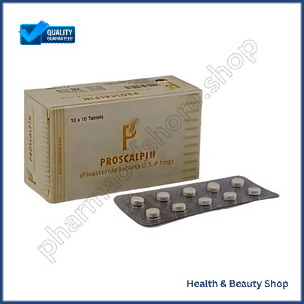
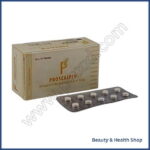

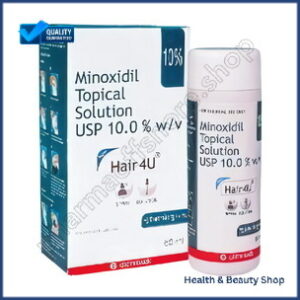
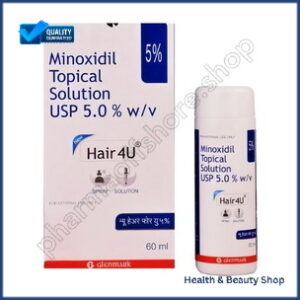

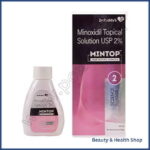
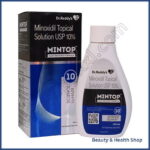
There are no reviews yet.